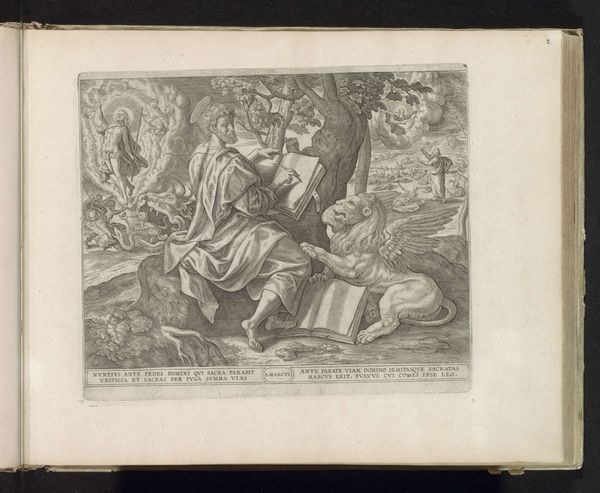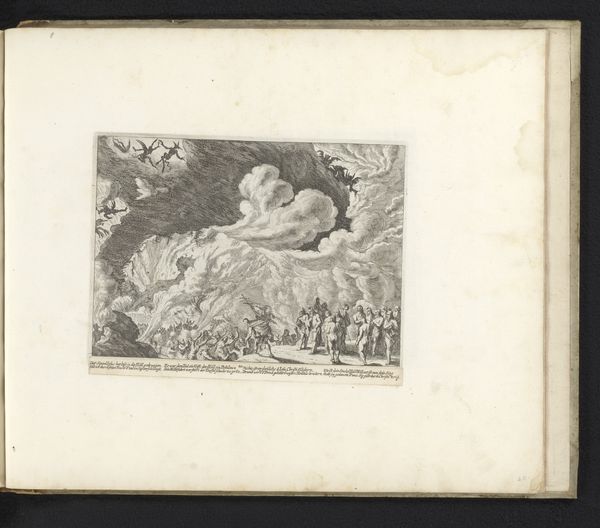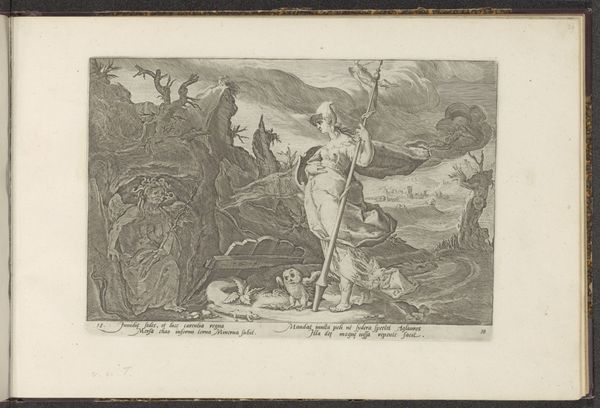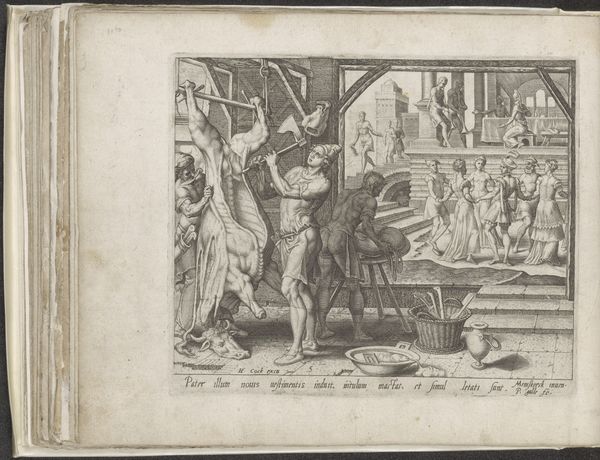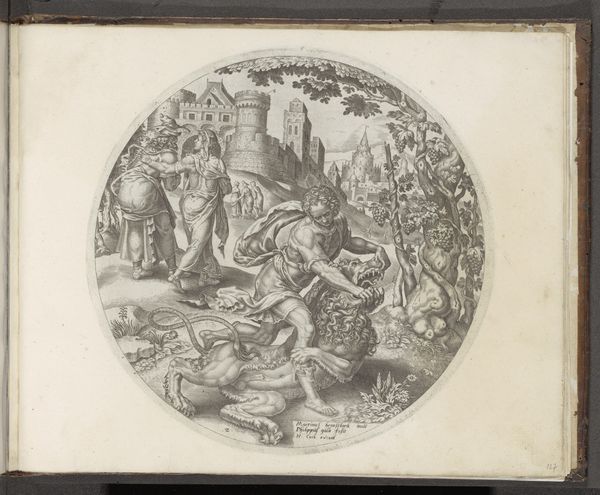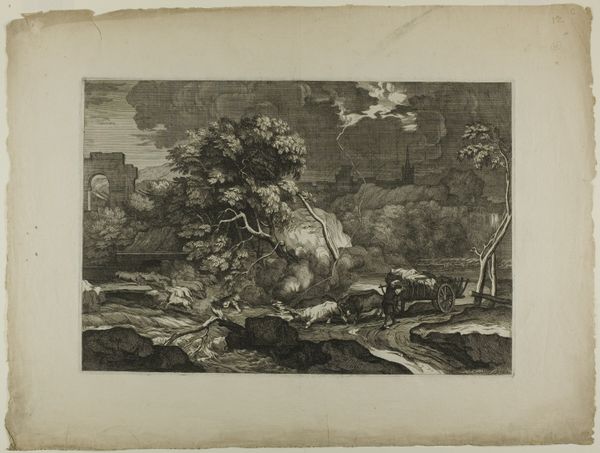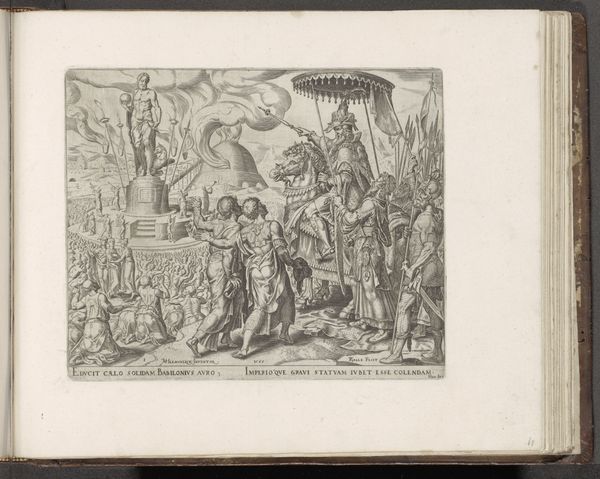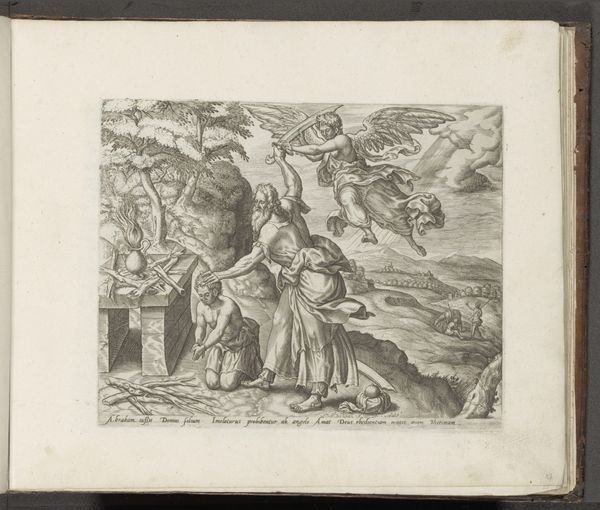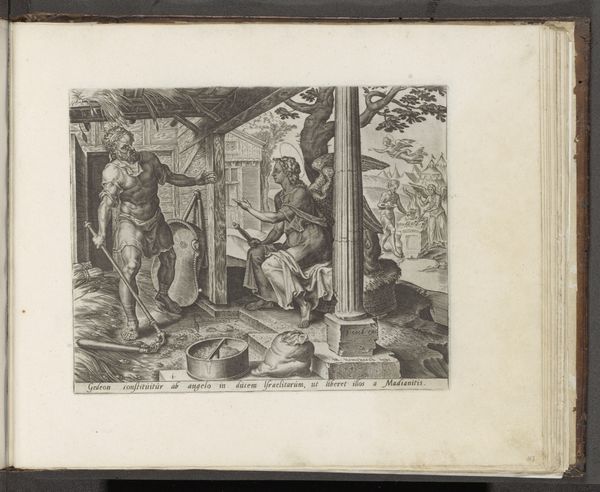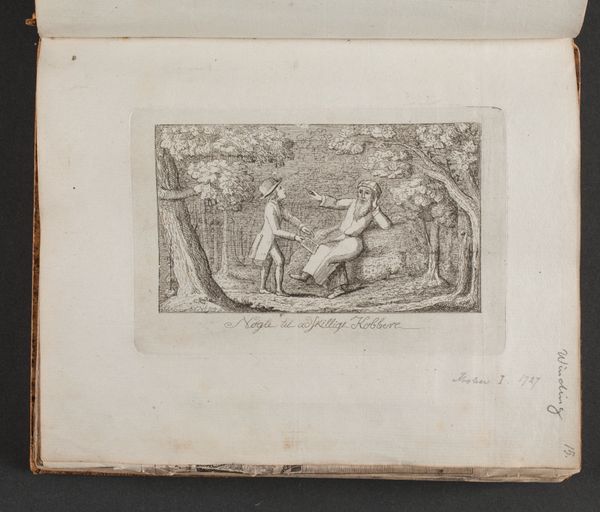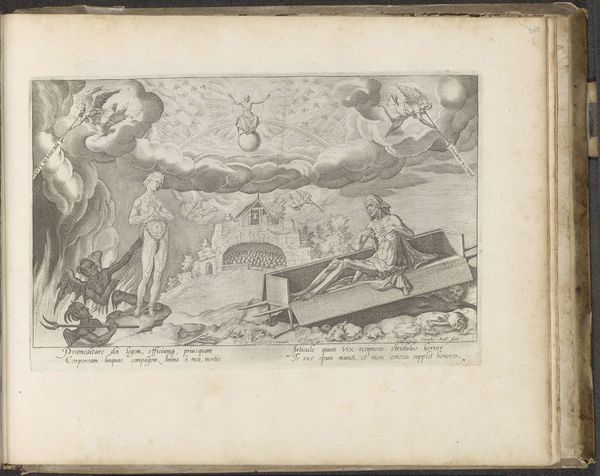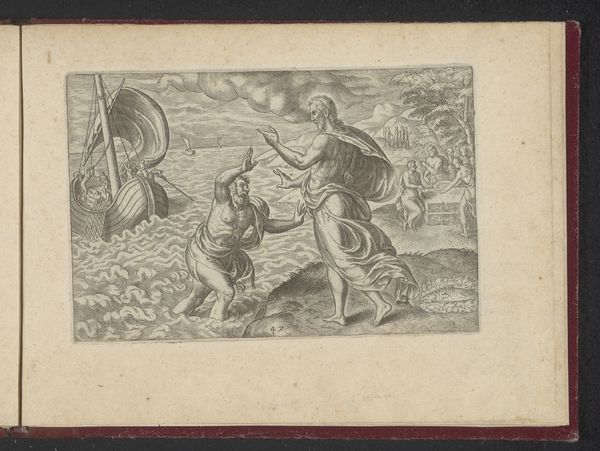
Volgelingen van Christus nemen hun kruis op en gaan door de smalle poort over de smalle weg 1563 - 1567
0:00
0:00
anonymous
Rijksmuseum
drawing, ink, engraving
#
drawing
#
allegory
#
pen drawing
#
mannerism
#
figuration
#
ink
#
line
#
history-painting
#
engraving
Dimensions: height 203 mm, width 248 mm
Copyright: Rijks Museum: Open Domain
Curator: Here we have a rather intricate pen and ink drawing dating from the latter half of the 16th century, specifically 1563 to 1567. Its full title, translated from the Dutch, is "Followers of Christ take up their cross and go through the narrow gate over the narrow road." Editor: It certainly is intricate! My eye is immediately drawn to the sheer number of symbolic objects strewn across the lower foreground—a chessboard, a theatrical mask, a tennis racket… It feels very theatrical, like a stage set crammed with metaphorical props. Curator: That theatricality speaks directly to the Mannerist style popular at the time. Look at the elongated figures, the somewhat exaggerated postures as they struggle uphill. Mannerism often served the social and religious elite of the era. Didactic art like this drawing would have been commissioned by the church. Editor: Yes, the uphill climb toward that domed structure definitely screams of Christian allegory. Note how all figures bear their crosses—burdens? Repentance?—but those discarded objects at the bottom, those temptations of worldly life, still cling. They even litter the path upward. What is that a chalice? And burning flames below as well. Curator: Interesting. I'd argue those 'temptations' actually operate on another symbolic register. Remember that allegory at this time served more as an illustrative lesson in behavior, rather than moral judgements. This may signal an opening to question the Catholic authority. It definitely shows us a complex and ever changing social landscape. Editor: A questioning of authority maybe, and one reflected by the visual chaos present within the drawing itself, or perhaps the struggle to ascend and transcend material attachments? Regardless of whether this speaks of faith lost or retained. This is one drawing that has multiple meanings throughout the ages. Curator: Absolutely. And the drawing's home here in the Rijksmuseum connects it to a long history of Dutch visual culture and its power to communicate cultural and historical narratives through art. Editor: A very visual testament to burden, faith, and artistic intent, delivered with detailed complexity that encourages lingering thought, even after all these centuries.
Comments
No comments
Be the first to comment and join the conversation on the ultimate creative platform.
